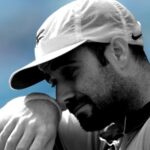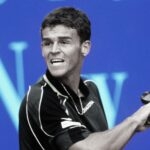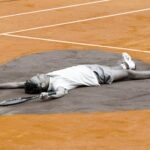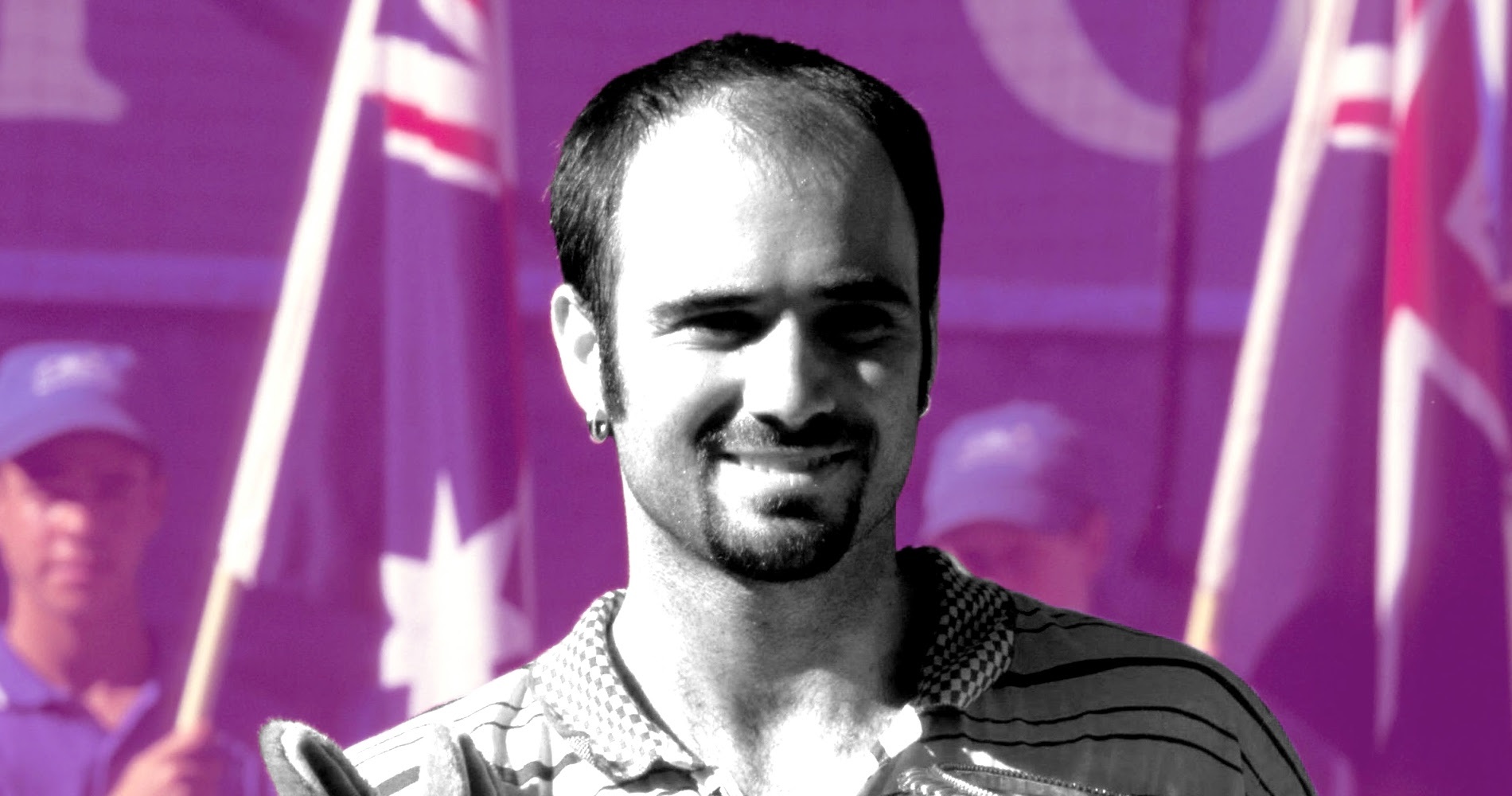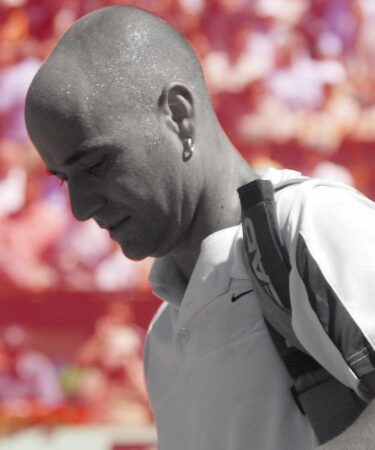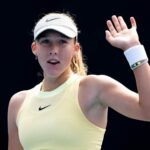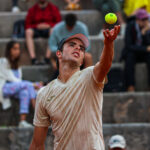December 3, 2000: The day Gustavo Kuerten upset Agassi to finish the year as world No 1
On this day in tennis history, Gustavo ‘Guga’ Kuerten beat Andre Agassi at the year-end championships to reach No 1 and make history for South America
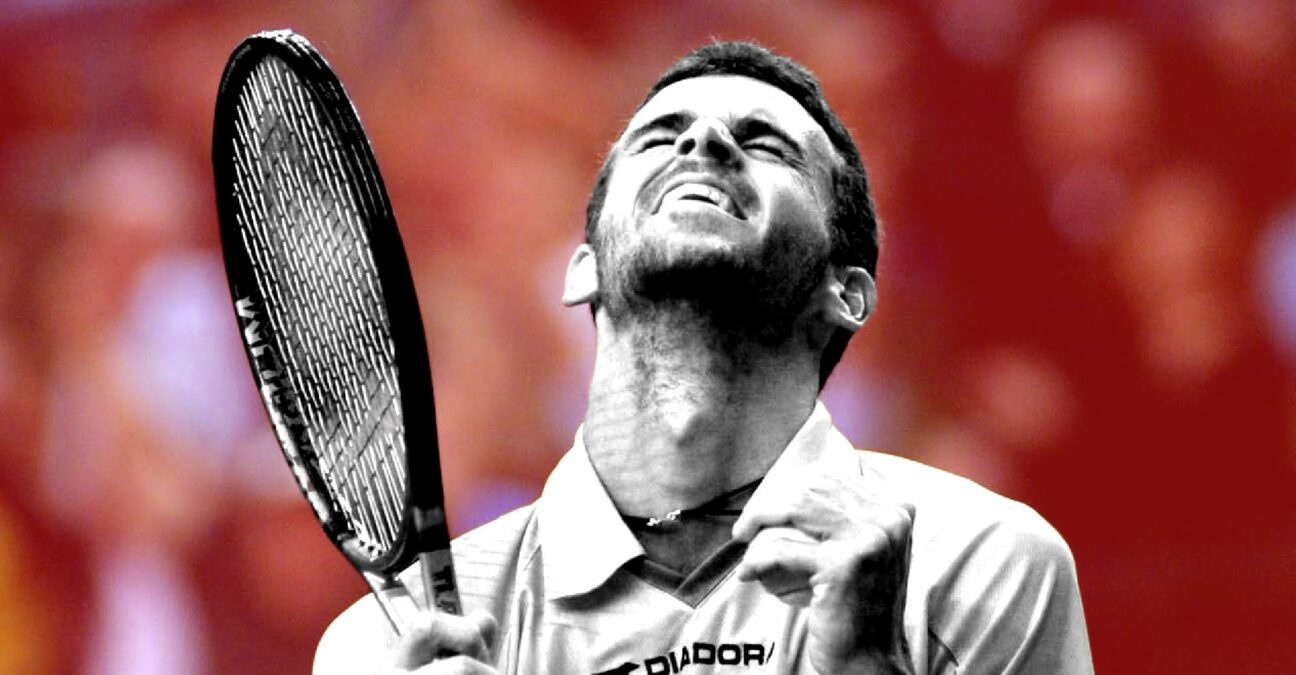 Kuerten – © Tennis Majors
Kuerten – © Tennis Majors
What exactly happened on that day?
On this day, December 3, 2000, Gustavo Kuerten beat Andre Agassi in the Masters Cup final (6-4, 6-4, 6-4) to edge Marat Safin as the season-ending world No 1. The Brazilian, who was No 2 at the start of the event, achieved the incredible feat of defeating Pete Sampras (6-7, 6-3, 6-4) and Agassi to clinch the title on a fast indoor surface that seemingly didn’t favour his game. It was the first time that “Guga” reached the top spot, and he was also the first South American to finish a year atop the ATP rankings.
The players involved: Gustavo Kuerten and Andre Agassi
- Gustavo Kuerten: clay-court genius
Born in 1976, Gustavo Kuerten became world famous in 1997 when, ranked No 66 and relatively unknown, he claimed the title at Roland-Garros by defeating the previous three champions: Thomas Muster, Yevgeny Kafelnikov and in the final, Sergi Bruguera (6-3 6-4 6-2). Not only was it his first career title, it was also his first final! His game, relying on a great first serve, impressive one-handed backhand and drop shots, made him an excellent clay-court player. Finishing 1997 as world No 14, he struggled to back up his play and in 1998 his results were disappointing. Although he gained confidence during the clay swing, he was defeated in the second round of the French Open by a young Marat Safin in five sets (3-6, 7-6, 3-6, 6-1, 6-4) in the pair’s first meeting.
He began 1999 as world No 23, and although some thought his 1997 magic wouldn’t be duplicated, Guga was confident in his abilities. Reaching the semi-finals in Indian Wells, he then delivered an impressive Davis Cup performance on clay against Spain, defeating world No 2 Carlos Moya and Alex Corretja, before claiming his first Masters 1000 title in Monte-Carlo. Kuerten was turning into a favourite for the Roland-Garros crown, but in Paris, he was defeated in the quarter-finals by Andrei Medvedev (7-5, 6-4, 6-4). In the second half of the season, he confirmed his improvement on fast surfaces, reaching the quarter-finals at both Wimbledon (lost to Andre Agassi, 6-3, 6-4, 6-4) and the US Open (lost to Cedric Pioline, 4-6, 7-6, 7-6, 7-6, with the third-set tiebreak finishing 16-14).
In 2000, after reaching the final in Rome (defeated by Magnus Norman, 6-3, 4-6, 6-4, 6-4), he won the Hamburg Masters (defeating Safin in the final, 6-4, 5-7, 6-4, 5-7, 7-6) and then triumphed at Roland-Garros for the second time, getting his revenge over Norman in the final (6-2, 6-3, 2-6, 7-6). In the European summer, he claimed his first title on hard courts at Indianapolis, defeating Safin again (3-6, 7-6, 7-6), but he suffered a disappointing loss against the big-serving Wayne Arthurs in the first round of the US Open (4-6, 6-3, 7-6, 7-6) which, in the eyes of the experts, was going to cost him the year-end world No 1 spot after his rival Safin won in New York.
- Andre Agassi: the Las Vegas Kid turned Grand Slam champ
Andre Agassi, the “Las Vegas Kid,” was already a tennis legend. He turned professional in 1986 and soon became one of the game’s biggest superstars, thanks to his amazing tennis skills but also his flamboyant outfits, including the iconic denim shorts and pink bike shorts worn underneath. Taught by his father and bred at the Nick Bollettieri Academy in Florida, his game relied on a great return (perhaps the best of its time) and hitting the ball on the rise on both sides with incredible power. It was revolutionary at the time but then copied by generations of tennis players. After finishing runner-up three times, once at the 1990 US Open and twice at Roland-Garros (1990, 1991), he surprisingly claimed his first Grand Slam title on grass in 1992, defeating the big-serving Goran Ivanisevic in the Wimbledon final (6-7, 6-4, 6-4, 1-6, 6-4).
That was followed by the 1994 US Open title and the 1995 Australian Open crown, the only time he beat his long-time rival, Pete Sampras, in a Grand Slam final (4-6, 6-1, 7-6, 6-4). Agassi reached world No 1 shortly after, on April 10, 1995, and remained there for 30 weeks. Despite a gold medal at the 1996 Atlanta Olympics, he endured personal issues and his ranking dropped to No 141 in 1997. Displaying great humility, he returned to the ATP Challenger tour at the end of 1997 to regain confidence. He slowly came back to the top in 1998, finishing the year ranked sixth, although his Grand Slam results were disappointing.
In June 1999, he eventually triumphed at Roland-Garros, edging Andrei Medvedev in dramatic fashion (1-6, 2-6, 6-4, 6-3, 6-4), thus achieving a career Grand Slam. Thereafter, he finished runner-up to Sampras at Wimbledon (6-3, 6-4, 7-5) and claimed another Grand Slam crown at Flushing Meadows, defeating Todd Martin in the final (6-4, 6-7, 6-7, 6-3, 6-2).
Thanks to that second US Open title, Agassi reclaimed the world No 1 spot in September. At the 2000 Australian Open, he became the first player since Rod Laver in 1969 to reach four consecutive Grand Slam finals, defeating Yevgeny Kafelnikov (3-6, 6-3, 6-2, 6-4) to clinch a sixth major title. The following months proved harder for the “Las Vegas Kid,” who, facing family issues, didn’t achieve any great results by his lofty standards apart from a semi-final at Wimbledon. In September, he lost the world No 1 spot, exactly 52 weeks after having reclaimed it, and when he arrived at the Masters Cup, he was ranked No 8 in the world.
The place: Lisbon, Portugal
Founded in 1970, the year-end ATP World Tour Finals was the annual showdown between the best eight players in the world. Held in a different location every year at the start, it settled at Madison Square Garden in New York from 1977 to 1989 before moving to Germany through 1999. In 2000, the Masters Cup was even more exciting because Marat Safin and Gustavo Kuerten were still battling for the No 1 spot. The venue was Lisbon in Portugal, so Kuerten likely felt at home since Portuguese is Brazil’s main language.
The facts: Kuerten beats Agassi in straight sets
On December 3, 2000, before Gustavo Kuerten faced Andre Agassi in the final of the Masters Cup, he knew that a victory would not only make him world No 1 for the first time, but also that it would make him the year-end No 1, a feat that no South American player had ever achieved.
Days earlier, such a scenario seemed almost impossible. Marat Safin was world No 1 at the start of the tournament, and after Kuerten lost his first round-robin match to Agassi, it looked like the battle for top spot was over and done. But “Guga” managed to make his way into the semi-finals, while the Russian was not able to beat Sampras in the round-robin, which would have sealed the deal. But even at that stage, Kuerten’s chances were low. His only hope was that Safin would lose in the semi-finals, and then, he still had to win the tournament, which meant beating Sampras, and then Agassi, on his least favourite surface.
In the first semi-final, Safin was unable to secure his No 1 spot, defeated by Agassi in straight sets (6-3, 6-3). Kuerten, meanwhile, stunned Sampras against all the odds (6-7, 6-3, 6-4). The Brazilian was now one win away from the world No 1 spot, but, against the Las Vegas Kid on a hard court, he wasn’t the favourite. However, Guga set the standards early on, breaking Agassi’s serve in the opening game. His first serve was particularly sharp, which allowed him to hold on to his service games without much fuss, and he took the first set, 6-4. Playing in the zone, Kuerten delivered a first serve and one-handed backhand masterclass. He didn’t let Agassi dictate, putting constant pressure on the American, whom he outclassed in straight sets, 6-4, 6-4, 6-4.
The then two-time Roland-Garros champion had achieved the impossible. He had claimed his first major title on hard courts, defeating the two tennis legends in consecutive matches, and seized the year-end No 1 spot at the very last minute.
What happened next? More Grand Slams for Kuerten and Agassi
Gustavo Kuerten would claim a third title at Roland-Garros in 2001 (beating Alex Corretja, 6-7, 7-5, 6-2, 6-0), the year he drew his famous heart on the Court Philippe Chatrier. In total, he would hold the No 1 spot for 43 weeks. After hip surgery, he fell in the fourth round at Roland-Garros in 2002 to eventual champion Albert Costa, and the rest of his career became a struggle due to the injury. He retired in 2008, his last appearance coming fittingly at Roland-Garros.
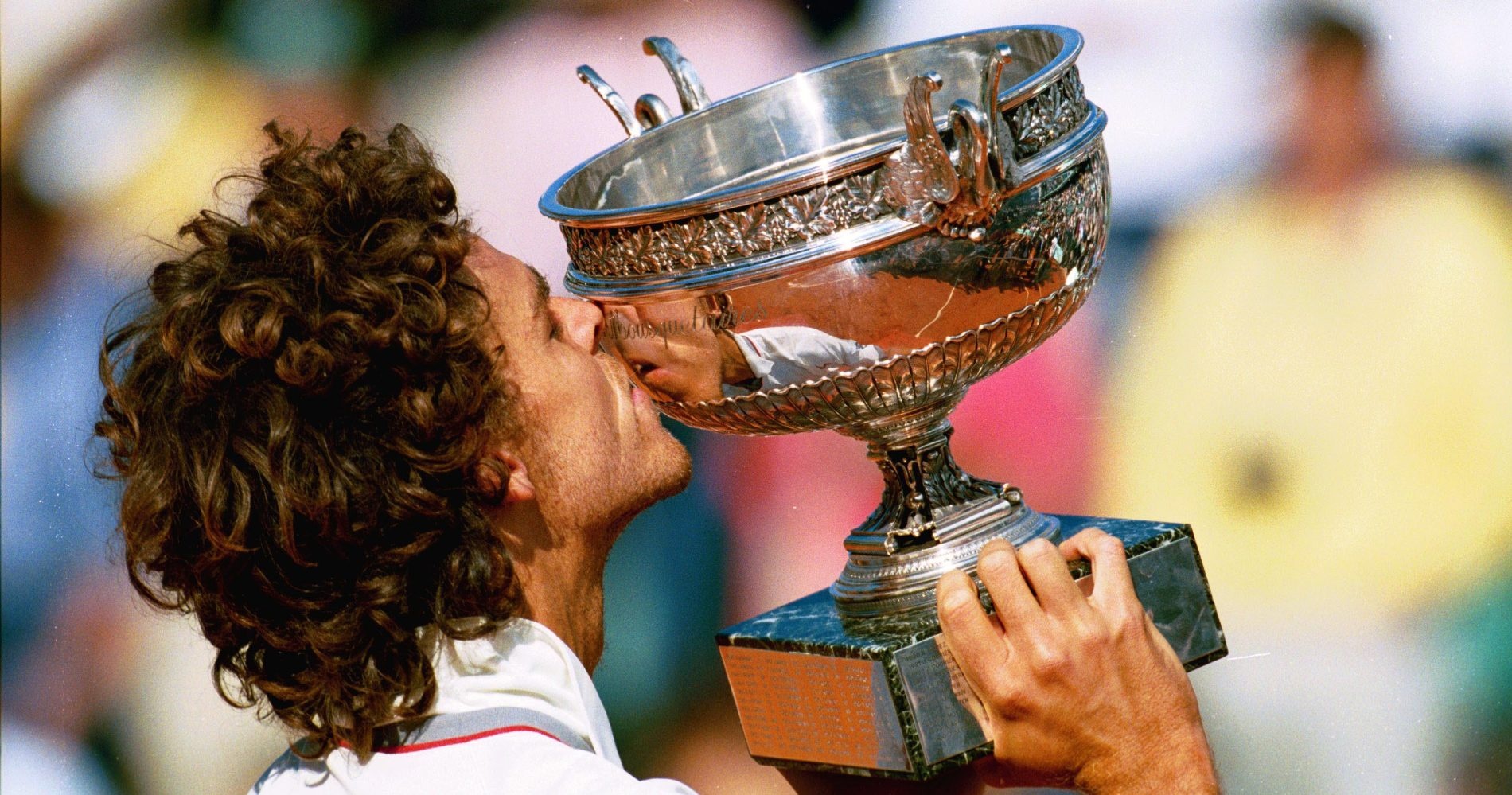
Agassi would add two more Australian Open titles to his career achievements (2001, 2003) to bring his Grand Slam tally to eight, and he would appear for the last time at the top of the rankings on September 7, 2003. Aged 35, he would reach his last Grand Slam final in New York in 2005, where he was defeated by Roger Federer (6-3, 2-6, 7-6, 6-1). Only in 2006 would he exit the top 10 once and for all. He ended his career at Flushing Meadows in 2006, losing to Becker – Benjamin Becker, that is, in the third round.
